My Mother-in-Law Devoured Our $2000 Wedding Cake, So I Iced Her With Sweet Revenge

Imagine leaving your house one morning and seeing not one but 2 stars shining in the sky! The first one is our good old Sun, and the other is... Jupiter! But how has a PLANET turned into a star? And what will now happen to Earth and its inhabitants?
Before we find the answer to these urgent questions, we need to revise some things we know about Jupiter. The largest planet in the Solar System is a gas giant, which means it’s made up mostly of gases. Due to the pressure and temperature differences, these gases separate into layers. This creates those red and white bands that can be clearly seen from Earth.
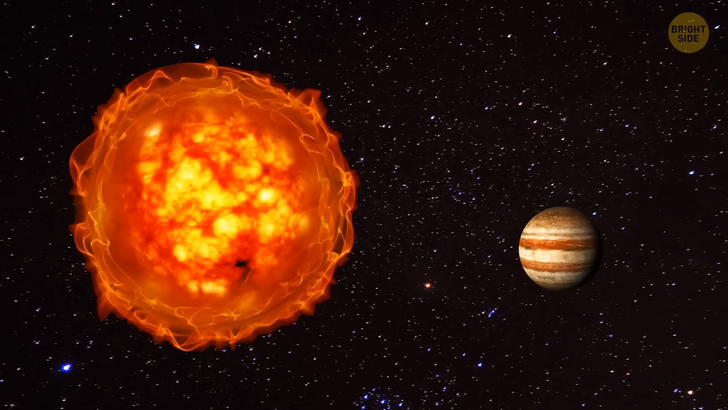
The temperatures at the top of Jupiter’s atmosphere are insane. They can reach a whopping 1,340˚F! The planet also has an immense gravitational pull. In 1995, the Galileo probe reached the atmosphere of Jupiter and sliced it at a speed of 106,000 mph!
It survived the scorching temperatures and started its descent. It kept moving even when the temperatures suddenly dropped and the pressure, as well as the speed of the wind, increased. But 58 minutes and 97 miles into its exploration, things went downhill. The pressure of 23 atmospheres and still-high temperatures finished the probe off — it was melted and then vaporized by the extreme heat.
Now, if Jupiter suddenly decided to keep growing, it would eventually become a star. And its composition would allow this planet to do it. Once, a long, long time ago, Jupiter took most of the mass that was left after the formation of our Sun. That’s how it ended up with more than twice the combined material of all other bodies in the Solar System. And the planet’s ingredients are the same as those of a star: mostly hydrogen and helium.
Jupiter is just not massive enough to ignite. But what if it was?! Then it would turn into another kind of celestial body — most likely, a brown dwarf. In this case, it would have a minor effect on the orbits of the planets of our Solar System, because brown dwarfs are more massive than planets but not as massive as stars. A brown dwarf is usually 13 to 80 times the mass of Jupiter. It can only become a star if the pressure in its core gets high enough to start nuclear fusion.
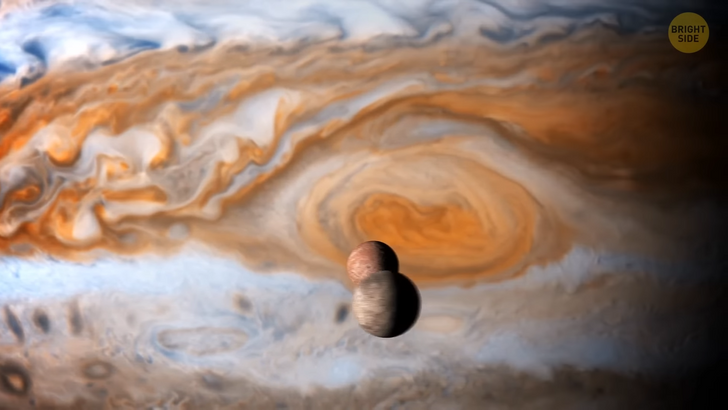
So, let’s imagine that it’s happened. And Jupiter has become a real star, for example, a red dwarf. Red dwarfs are stars with masses around 7.5% to 50% of the mass of our Sun. Red dwarfs are also hotter than brown dwarfs. Their temperature can reach 6,380˚F. Our Sun, by comparison, has a temperature of almost 10,000˚F.
So, it means that the newly formed red dwarf will be far dimmer than the Sun. And still, red dwarf Jupiter could prevent the inner planets from following their orbits — because they wouldn’t be able to find a balance between the gravitational forces of the two stars. The planets would move either closer to the Sun or closer to the newly formed red dwarf.
If Earth chose the first option, our main star’s insane temperatures would probably wipe all living beings off the face of the earth in no time. If it was the second scenario, we would probably freeze since Jupiter — as a dim red dwarf — wouldn’t be able to warm us up well enough. But there could be one more option: the inner planets could get thrown out of the Solar System altogether.

If Jupiter was a star, it would also greatly increase the amount of radiation the surface of Earth would receive. Our atmosphere would have to protect us both from the radiation coming from the Sun and from Jupiter’s radiation.
Red dwarfs are notoriously active. That’s why Jupiter, just like the Sun, would most likely have frequent coronal mass ejections. This is a fancy expression for describing large clouds of electrically charged particles a star releases with a huge burst of speed. Even now, Jupiter has a significant impact on our planet.
The gas giant is roughly 318 times as massive as Earth. And this also means it has an outsized pull on our planet. Its gravity can cause shifts in the orbit of our planet and climate swings every 400,000 years or so. When Jupiter’s influence is the strongest, Earth usually has colder winters, hotter summers, and more intense periods of wetness and droughts.
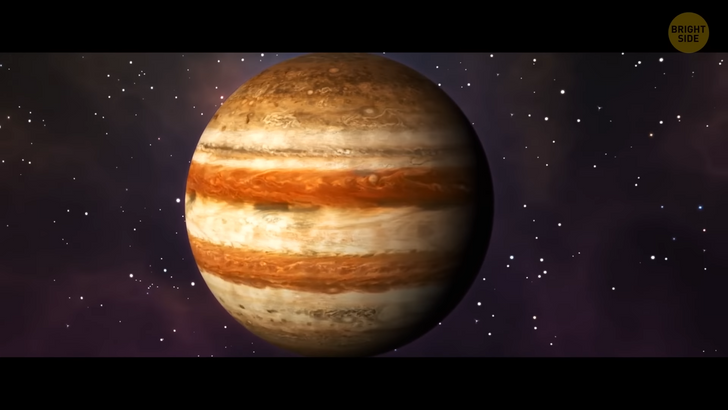
Also, if Jupiter turned into a red dwarf, its most prominent feature might probably disappear for good! I’m talking about the Great Red Spot. It’s an enormous storm raging in the Southern Hemisphere of the gas giant. Its top parts tower more than 5 miles above the tops of the surrounding clouds. The storm is almost twice as wide as our planet!
In 2017, NASA’s Juno space probe managed to collect lots of data about the Red Spot. And it turned out that this monster of a storm went more than 200 miles down into the planet’s atmosphere. That’s 30 to 100 times deeper than any ocean on Earth. But these measurements are most likely imprecise, and the storm’s true roots can be reaching even deeper!
The Great Red Spot is colder than the rest of the atmosphere. And keep in mind that Jupiter’s temperatures are −280˚F in the upper cloud layers! On the other hand, the closer to the core, the hotter it gets. Mysteriously, the highest temperatures ever recorded on the gas giant occurred in the atmosphere right above the Great Red Spot! They were higher than the temperature of lava on our planet.
Astronomers believe that the turbulence caused by the storm might produce gravitational and sound waves that can be responsible for the superheating. But the storm itself is warmer at the bottom than at the top. People have been watching the moving vortex on Jupiter for more than 150 years. Some time ago, astronomers predicted that it would gradually slow down and become smaller or disappear altogether.
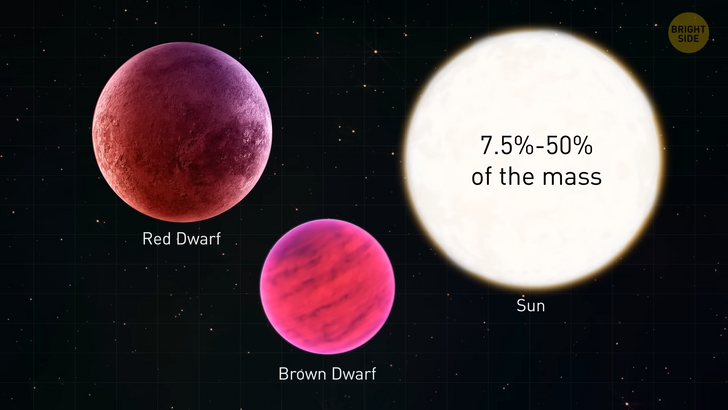
But that turned out not to be the case! After having analyzed all the data received with the help of the Hubble Space Telescope, researchers were baffled to discover that the winds at the outer boundaries of the storm had actually picked up speed! The wind speed at the edges of the storm can reach a mind-boggling 400 mph. That’s faster than Earth’s tornadoes! At the same time, if you found yourself at the center of the Great Red Spot, you wouldn’t be too impressed. The winds there move way more slowly.
And now, I have another what-if situation for you! What if Jupiter collided with the smallest star we know about? Today, these two space bodies are on a collision course! A spoiler: Earth might not survive such an encounter. Ok, meet this tiny red dwarf [EBLM J0555-57Ab]. It’s the size of Saturn, and its gravity is around 300 times the gravity of our planet. It normally floats 600 light years away from Earth in a double-star system.
But today, for some inexplicable reason, it’s broken all the laws of the Universe and is rushing toward the biggest gas giant in our Solar System. And even though this space guest is smaller than Jupiter, its mass is way greater. And its gravitational force soon starts to pull on the gas giant. The heat from the red dwarf, plus its powerful gravity, makes Jupiter grow in size. The planet’s atmosphere starts to puff up because the gasses that make up the planet begin to heat up and expand. Jupiter’s atmosphere starts to leak into space toward the stellar visitor.
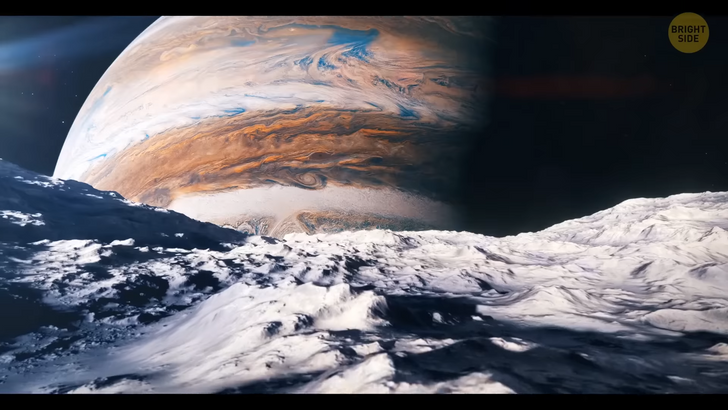
Some time later, the runaway gasses form a bright hot ring around the red dwarf. This is a terrifying view — as if a black hole (a very bright one) has appeared inside the Solar System. The star keeps tearing Jupiter apart, eating chunks of the gas giant. And soon, the red dwarf engulfs it completely.
Sadly, Jupiter never stood a chance. Instead of the gas giant, we now have a red dwarf surrounded by a ring of hot gasses. And we already know how badly it may end. The best thing about it is that this scenario is totally imaginary. Phew! Thank goodness!











